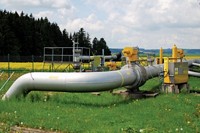Advertisement
Grab your lab coat. Let's get started
Welcome!
Welcome!
Create an account below to get 6 C&EN articles per month, receive newsletters and more - all free.
It seems this is your first time logging in online. Please enter the following information to continue.
As an ACS member you automatically get access to this site. All we need is few more details to create your reading experience.
Not you? Sign in with a different account.
Not you? Sign in with a different account.
ERROR 1
ERROR 1
ERROR 2
ERROR 2
ERROR 2
ERROR 2
ERROR 2
Password and Confirm password must match.
If you have an ACS member number, please enter it here so we can link this account to your membership. (optional)
ERROR 2
ACS values your privacy. By submitting your information, you are gaining access to C&EN and subscribing to our weekly newsletter. We use the information you provide to make your reading experience better, and we will never sell your data to third party members.
Environment
Study Reduces Global Warming Estimate
Scientists narrow uncertainty range of projected temperature increase stemming from greenhouse gas emissions
by Stephen K. Ritter
November 28, 2011
| A version of this story appeared in
Volume 89, Issue 48
The sensitivity of Earth’s climate to increasing levels of atmospheric carbon dioxide may be less than previously estimated. Climate sensitivity is a standard measure of how much Earth’s global surface air temperature will increase in response to a doubling of CO2 compared with preindustrial levels. The current best estimate of climate sensitivity is 3.0 °C and likely falls within the range of 2.0 to 4.5 °C, according to the Intergovernmental Panel on Climate Change (IPCC). Those numbers are based on simulations primarily using data measured since 1850. They roughly correspond to the temperature increase range IPCC projects will occur by 2100. Oregon State University’s Andreas Schmittner and colleagues incorporated previously unavailable paleoclimate data from the peak of the last ice age 21,000 years ago into simulations to reestimate climate sensitivity (Science, DOI: 10.1126/science.1203513). They obtained a median sensitivity of 2.3 °C with a reduced uncertainty of 1.7 to 2.6 °C. IPCC has concluded that an increase of more than 2.0 °C would cause drastic changes in global climate (see page 7).




Join the conversation
Contact the reporter
Submit a Letter to the Editor for publication
Engage with us on Twitter